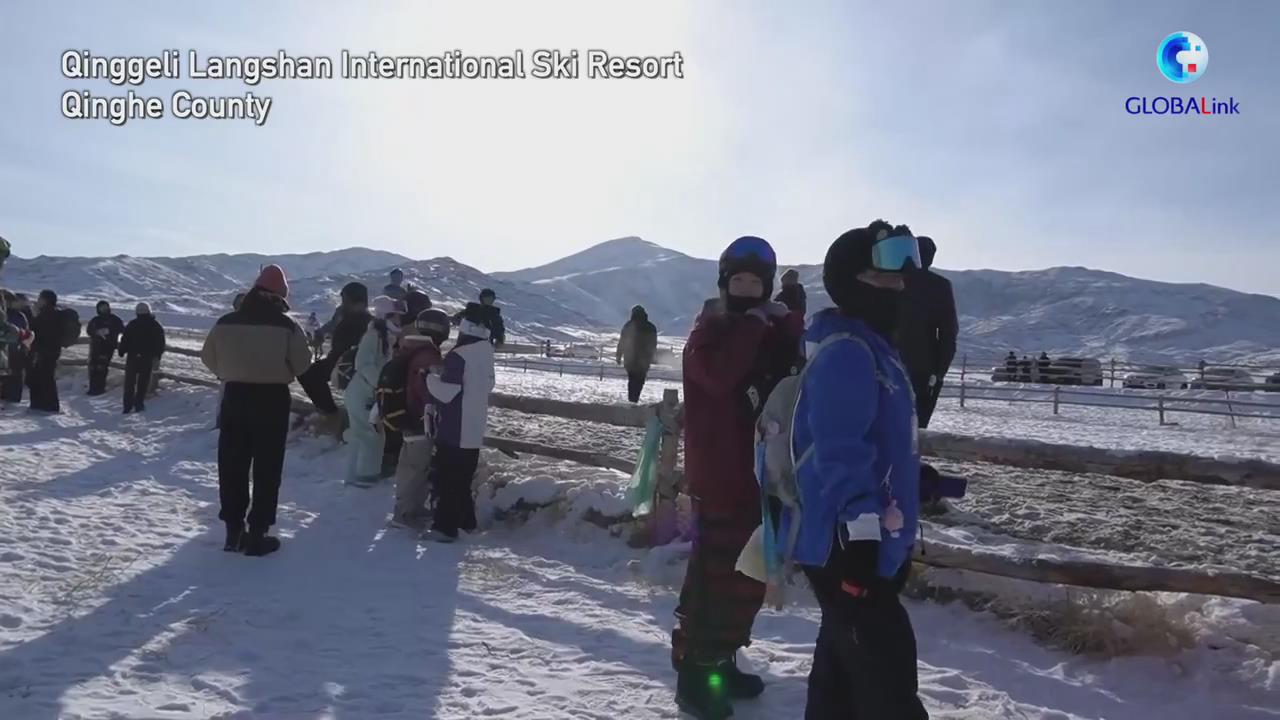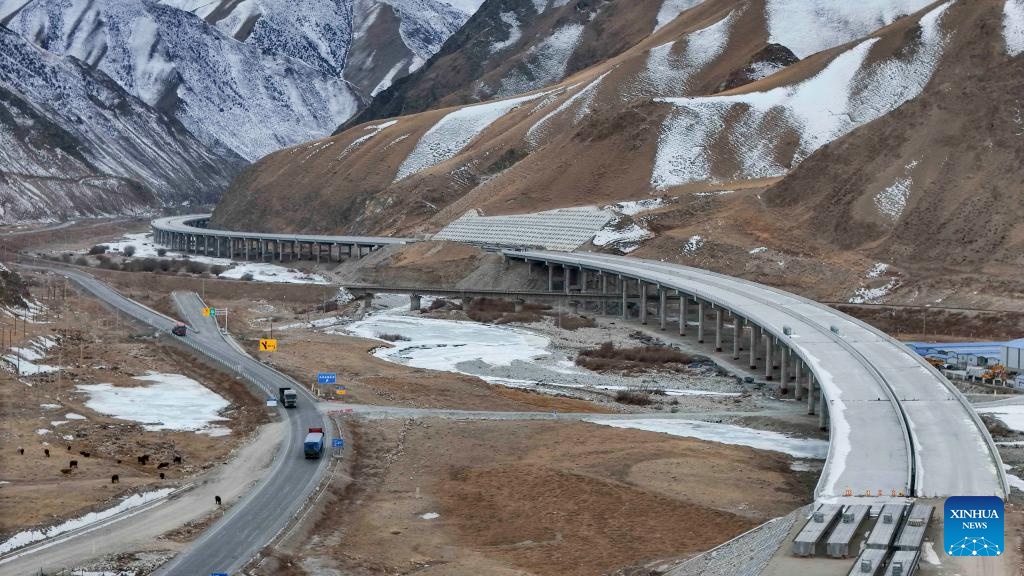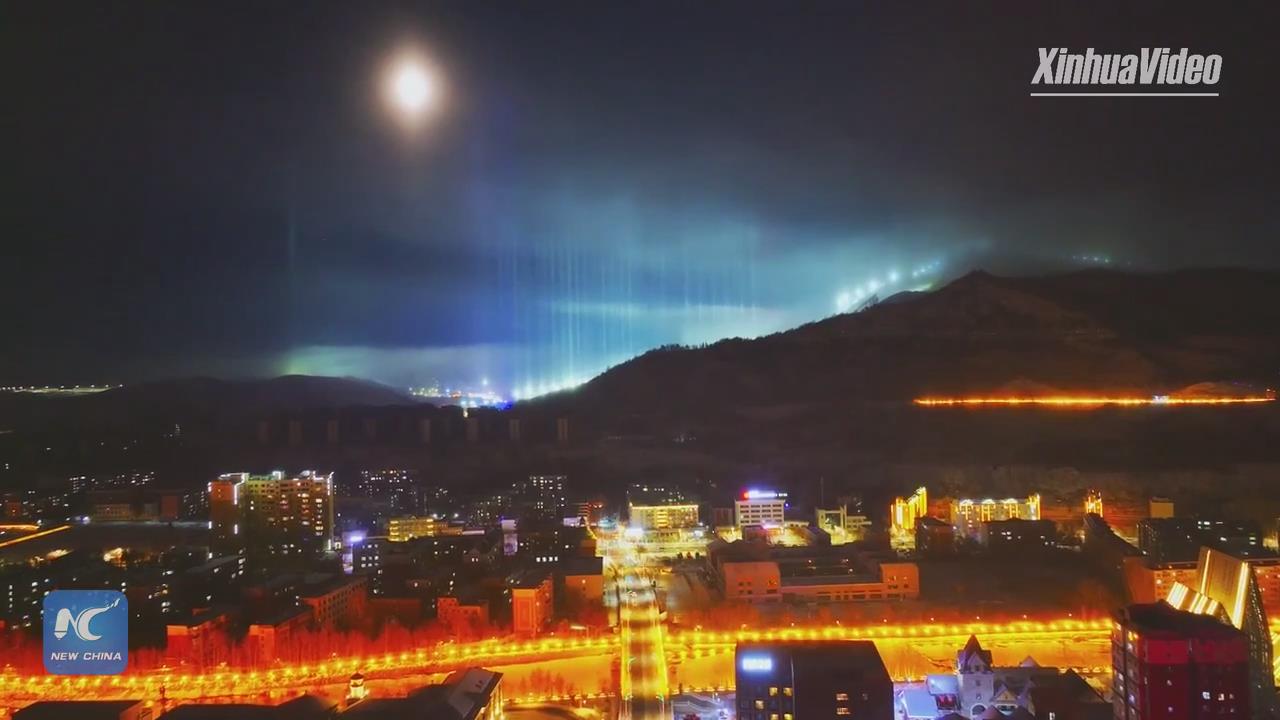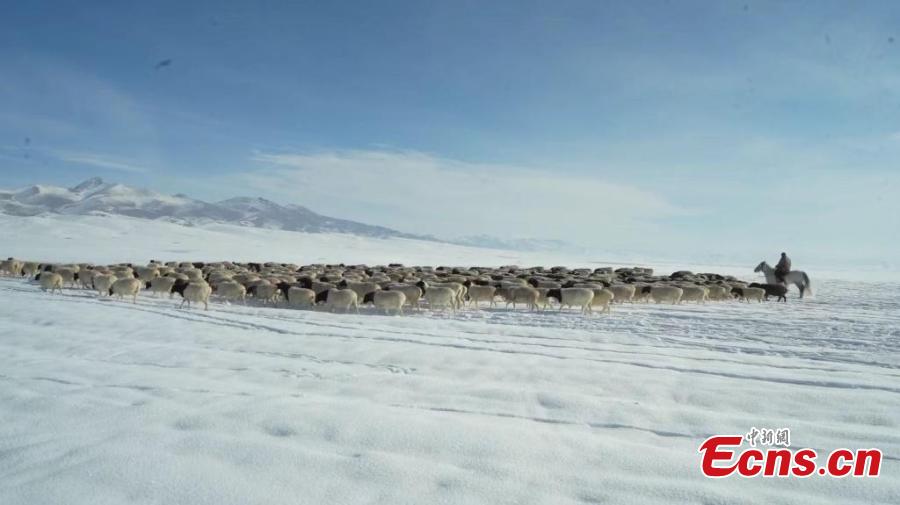
In October 1995, a Sino-Japanese joint archaeological team unearthed the tomb of an aristocrat from the Han Dynasty (206 B.C.-A.D. 220) in Hotan Prefecture in south Xinjiang Uyghur Autonomous Region. The tomb yielded a wealth of burial artifacts imbued with Chinese cultural elements. Among them, a brocade arm protector has since become a national treasure. Its vibrant hues remain intact even two millennia after it was made, and it is adorned with eight Chinese characters that, when translated into English, read "The five stars rise from the East, benefiting Zhongguo (China)." (In ancient times, the five stars that were said to appear in auspicious conjunction over China were identified with Chenxing, Taibai, Yinghuo, Suixing and Zhenxing. In modern times these are Mercury, Venus, Mars, Jupiter and Saturn—Ed.) This is, to date, the earliest known instance of the word "China" to have been discovered in the world. The arm guard, made of a luxurious textile typically produced in what is now Sichuan Province in southwest China and bestowed upon distinguished ministers and minority leaders in frontier regions by the emperor, is widely acknowledged as tangible evidence of the effective jurisdiction exercised by the central dynasty over the mass areas of "Xiyu" or the Western Regions, including today's Xinjiang.
However, the history of Xinjiang has become increasingly distorted and detached from the facts in recent decades under the influence of terrorism, violent ethnic separatist forces and religious extremism. It is also constantly used by secessionists as a tool to stigmatize China. To reestablish the truth of the region's history, the International Forum on the History and Future of Xinjiang, China was held in Kashgar, Xinjiang, on June 12, with more than 100 experts from China, the United States, Australia, Germany, Italy, Hungary, Egypt, Russia, Mongolia, Kazakhstan and Uzbekistan conducting in-depth discussions and contributing their suggestions for the region's development.
Svetlana Kozhirova, a senior international affairs scholar from Kazakhstan, current Director of the China and Central Asia Research Center at the Astana International Academic Complex, and a member of the Foreign Policy Committee of the Ministry of Foreign Affairs of Kazakhstan, said at the closing ceremony that she studied immigration between China and Kazakhstan in her early years at university and has long held an interest in the history of and current situation in Xinjiang. "This is my second time in Xinjiang. I have found that Xinjiang has undergone earth-shaking changes," she said. "This has ensured social stability and development, and these experiences are worth learning from for us in Kazakhstan."
The origin of the Uygur ethnicity
Yang Shengmin, a senior professor at the Minzu University of China who has long been engaged in ethnology and ethnic history research and has served as president of the Chinese Ethnology Society, pointed out, "The Tarim Basin has been a place where multiple ethnic groups have coexisted and integrated since ancient times."
In 840, the ancestors of the Uygurs, the Huihu people, migrated from the Mongolian grasslands to the oases of the Tarim Basin and gradually integrated with the local indigenous people.
"This integration took a long time. It wasn't until the early 16th century that all the residents of the oases in the Tarim Basin converted to Islam and spoke the Uygur language. Only then was the integration essentially complete and the Uygur ethnicity in its current sense formed," said Yang in his keynote speech.
In 60 B.C., the Han Dynasty established the Protectorate of Xiyu, and Xinjiang officially became part of China's territory. In the more than 2,000 years that followed, China went through countless regime changes and several periods of chaos lasting hundreds of years. However, once a unified dynasty was established, Xinjiang was always effectively governed, and the integration and exchange among different ethnic groups was continuous and widespread.
"The terms 'ethnic minority groups' and the 'Chinese nation' in China are not parallel, do not belong to the same level, and do not contain the same content. The 'nation' in 'Chinese nation' is a political concept, while the 'ethnicity' in 'ethnic minority groups' or 'ethnic minorities' is a linguistic and cultural concept. The 'Chinese nation' is a political community, referring to all the Chinese people; 'ethnic minority groups' are special linguistic and cultural groups within the political community," said Pan Wei, Director of the Institute for Global and Public Affairs and Chair Professor in the Faculty of Social Sciences at the University of Macau.
Multiple religions
Another mainly Western stereotype about Xinjiang is that the region belongs to the Islamic world and that the Uygurs have been Muslims since ancient times. But the fact is Islam is neither the indigenous religion of the Uygurs, nor is it the only religion they believe in. Whether to believe in religion and which religion to believe in is a basic freedom of Chinese citizens.
Before the introduction of Islam, the residents of Xinjiang had diverse religious beliefs. Shamanism, Zoroastrianism, Nestorianism and Manichaeism all had significant influences in Xinjiang, while Buddhism, after its introduction in the 1st century B.C., once became the dominant religion in the region, lasting for centuries. Today, the cultural remnants of these religions are still preserved in traditional Uygur culture.
Professor Niu Ruji, former Vice President of Xinjiang Normal University, who mainly engages in Silk Road language and cultural studies, believes that the ancestors of the Uygurs, the Huihu people, held Buddhism in high esteem. From the 9th to the 14th centuries, the Huihu translated massive volumes of Chinese Buddhist scriptures into their language. The translation of these Chinese Buddhist scriptures was an organized government action of the Huihu regime.
"Historically, cultural elements such as nomadic and farming cultures, Buddhism and Zoroastrianism, have been intertwined here," said Kozhirova. "The 'unity in diversity' characteristic of the Chinese civilization is also most fully demonstrated here. Xinjiang's diverse civilizational makeup exhibits a rare cultural diversity and harmonious coexistence in human history, and is an important part of the varied yet unified cultural pattern of the Chinese nation, having extremely high value for the study of the history of world civilizations."
Looking ahead
In addition to clarifying the true history of Xinjiang, another important topic of this forum concerns the future development of the region.
Historically, it was an important part of the ancient Silk Road. This Silk Road was one of the earliest trade routes connecting the Eastern and Western worlds. Mohsen Mohamed Negm-eldin, Dean of the School of Archaeology at Cairo University in Egypt, explained how the Silk Road is a network of trade routes that span more than 6,400 km. It extends westward from major commercial centers in ancient China, with the two most famous routes being one starting from Xi'an, the capital of many ancient Chinese dynasties, including the Han, and crossing Xinjiang's Taklamakan Desert, and the other starting from the east of China, crossing today's Hotan Prefecture of Xinjiang. Both routes eventually reach Egypt, which is thus considered the end of the ancient Silk Road. The Silk Road prospered from the 2nd century B.C. and lasted until the mid-15th century.
From ancient times to the present, Xinjiang has always been a place where Eastern and Western civilizations converge. Today, the region has a border with eight countries, with the land borderline spanning more than 5,700 km. It is the bridgehead for China to promote the Belt and Road Initiative (BRI) and the forefront of China's advancement of international trade.
"The importance of Kashgar and Xinjiang in history actually far exceeds the recognition given by most people," said Colin Mackerras, an honorary professor at Griffith University in Australia and a fellow of the Australian Academy of the Humanities. "Since 2013, with the promotion of the BRI, Xinjiang has once again become a center for the dissemination of infrastructure, culture and economic development."
Mirzohid Rakhimov, head of the Department of Contemporary History and International Studies at the Institute of History, Uzbekistan Academy of Sciences, stressed that Xinjiang plays a pivotal role in the relations between China and Central Asia. The region is not only a key hub for trade and investment between China and Central Asian countries, but also an important transit route for infrastructure development.
"Now, the BRI has become a global plan that requires in-depth bilateral and multilateral cooperation in the economic, political and security fields. For the Central Asian region, it is crucial to promote the implementation of regional and international projects. This includes improving inter-regional connectivity and technological progress, as well as actively promoting extensive cooperation in hi-tech innovation, education, public diplomacy and tourism among the participating countries of the BRI. In addition, the relationship between China and Central Asian countries is gradually shifting toward more emphasis on long-term and comprehensive cooperation goals," said Rakhimov.





.png)

























